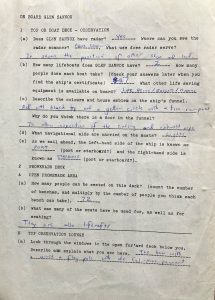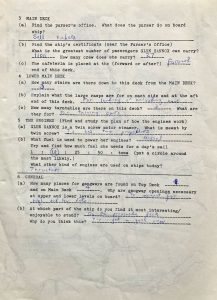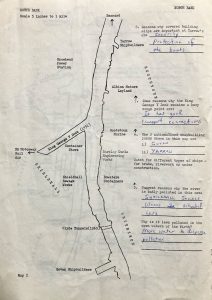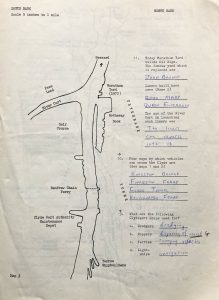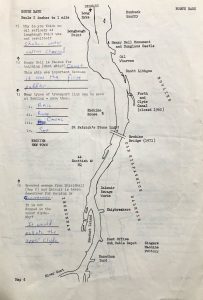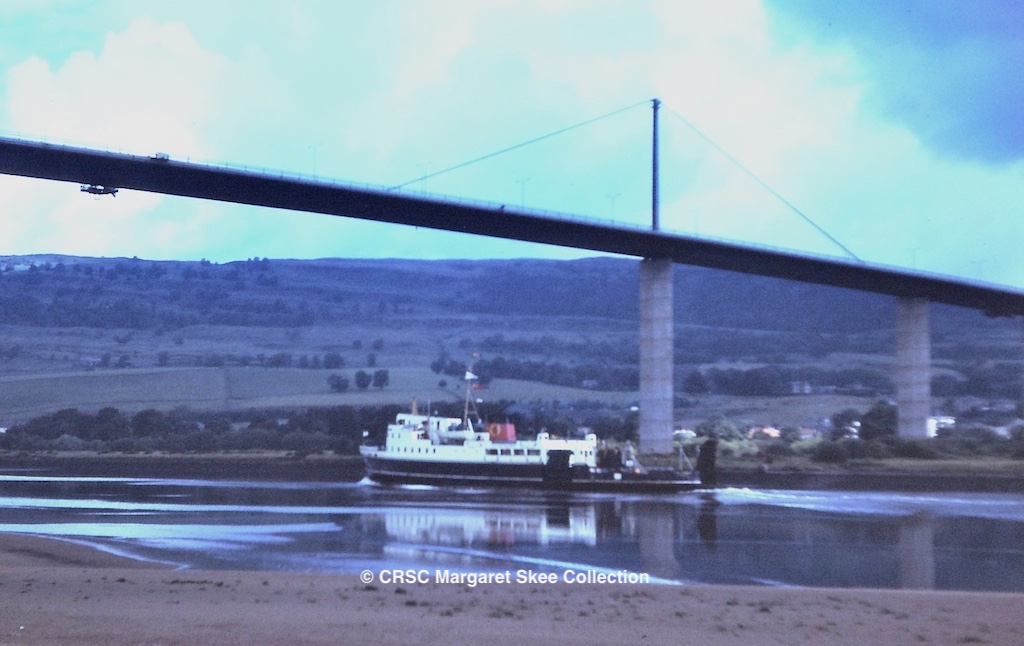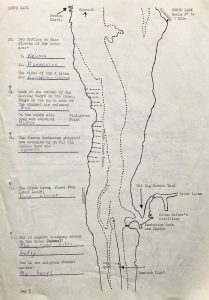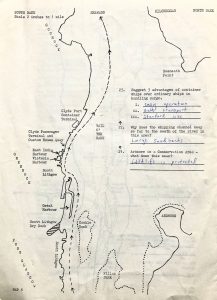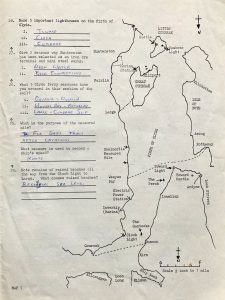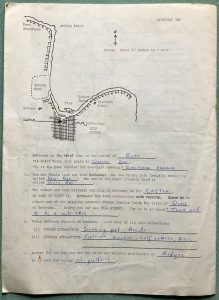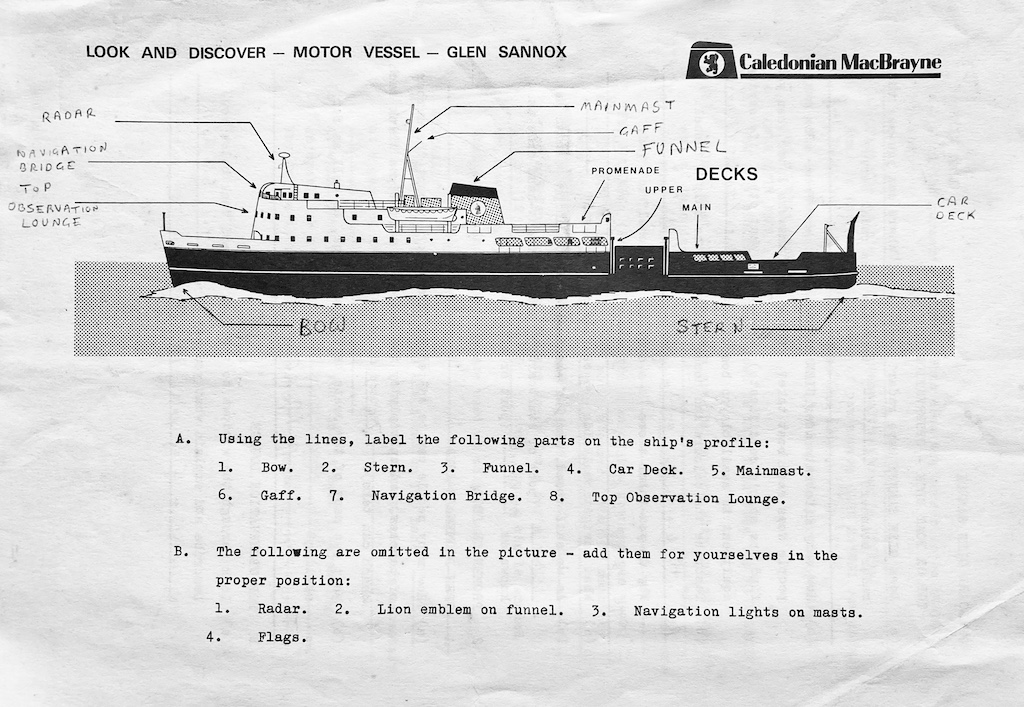
The front cover of James Fisher’s ‘worksheet’ featured the CalMac logo above the first part of a questionnaire, inviting school pupils to identify various parts of the ship by name. The remaining 11 pages (see below) encouraged the youngsters to find out more about the Clyde, its geographical characteristics and shipping heritage. There were references to Glen Sannox’s bow thrusters, Yarrows’ covered slipways, the Shieldhall sewage works, the Renfrew chain ferry, Denny of Dumbarton, Rothesay Castle and the oil platforms at Ardyne
It was a Thursday in June 1978. James Fisher, a steamer-loving pupil at the Hermitage Academy in Helensburgh, did not attend school that day — and he wasn’t skiving. No, he joined around 1,000 other youngsters on an educational cruise down the River Clyde to Rothesay. They sailed on the 1957 Glen Sannox, Arran’s first dedicated car ferry, which by the late 1970s had become CalMac’s ‘cruise boat’. She served in the fleet in various guises for another decade before being sold to the Red Sea in 1989.
Half a lifetime later, James has been prompted to remember his first ‘doon the watter’ trip by the discovery of a 12-page question-and-answer paper that he and his school chums were told to fill in during the cruise. James must have shoved his copy in a drawer and forgotten about it. His neat handwriting is visible next to all the typewritten questions.
It is a remarkable educational document, clearly intended to acquaint schoolchildren with the topography of a ship, the geography of the river and the shipbuilding history of the Clyde: there is even a question about Henry Bell’s Comet.
Whether today’s youngsters in Strathclyde, Argyll and Bute receive similar encouragement to learn about their maritime environment and shipping heritage from the decks of a ferry is an open question. But in the years before the death of Clyde shipbuilding, when computer programmes, ‘virtual’ tours and ‘remote’ learning had yet to be invented, this mid 1970s ‘Look and Discover’ initiative was a standard educational tool. From today’s perspective, it seems resourceful and enlightened.
James Fisher recently recalled his ‘doon the watter’ initiation in conversation with CRSC magazine editor Andrew Clark.
I know it was the late 1970s, because I remember seeing HMS Broadsword at Yarrows: she was launched in May 1976 and commissioned in May 1979. It was not long after Craigendoran pier was shut. I was born and brought up at Ardlui on Loch Lomondside — I’m one of those rarities! My family had lived there since moving from Otter Ferry in 1917. I had a 26-mile journey to and from school, every day.
On the day of the ‘Sannox’ trip, a busload of us — about 40, all part of the geography class, with teachers — went from Helensburgh to Glasgow, where we joined hundreds of other schoolchildren aboard the ship. It was good fun: you were away from school for a day with your mates.
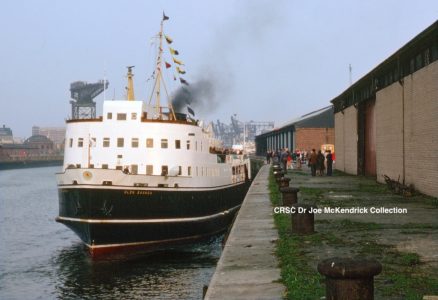
James’s first ‘doon the watter’ cruise started at Plantation Quay on the south side of the Clyde, downriver from today’s ‘Squinty Bridge’
Each one of us was given the worksheet. The idea was to make us pay attention to what was going on around us: we had to fill it in as we went along. There was a good ratio of teachers to pupils, but we were pretty much free to roam. I had previously sailed on the car ferry Caledonia on the Arran run, but this was my first time on Glen Sannox: I could tell she was bigger than Cowal and the ‘Maids’ — she had plenty of open air space, and we had free access to the car deck — but my first impressions were of the tacky tables and parasols at the stern, which she needed for her new role as CalMac’s ‘cruise ship’.
The main part of the trip was the downriver section as far as Greenock: you filled in those bits of the worksheet as you passed. When we reached Rothesay, we got off and just scurried up the town: we were left to our own devices and the teachers went to the pub. Rothesay folk probably regarded us with horror — a whole boatload of school kids descending on them.
Despite the fun we had that day, Glen Sannox was never one of my favourites. I never sailed on Queen Mary, but I always looked on the ‘Sannox’ as having pushed out the ‘Mary’ [which had been withdrawn from service after the 1977 summer]. I also viewed her as competition for Waverley, which was trying to establish herself in operational preservation. It was around that time that I signed up for the Paddle Steamer Preservation Society.
On the way back from Rothesay, the trip ended at Gourock, and we had to hang around there for a bit. I remember that Gourock station still had paddle steamer crests on display. I also remember observing Jupiter as she came in to the pier — she was still fairly new. The way she manoeuvred into the berth — that was the highlight of the day.
I held on to my worksheet because I regarded it as a souvenir, but the majority of those on board probably jettisoned it over the side. I can’t remember any post mortems.
The worksheet does provide insight into the educational mindset of the time. Looking at mine today makes me think — it would be great to have a time-machine to go back to that cruise. It was a very different scene then. The river in the 1970s was still a hive of activity. Shipbuilding was still on the go, as was the Meadowside granary, and Bowling oil terminal. The docks were still in use. Changed days!
Please click on the smaller images to see an enlarged version of each page of the ‘worksheet’.
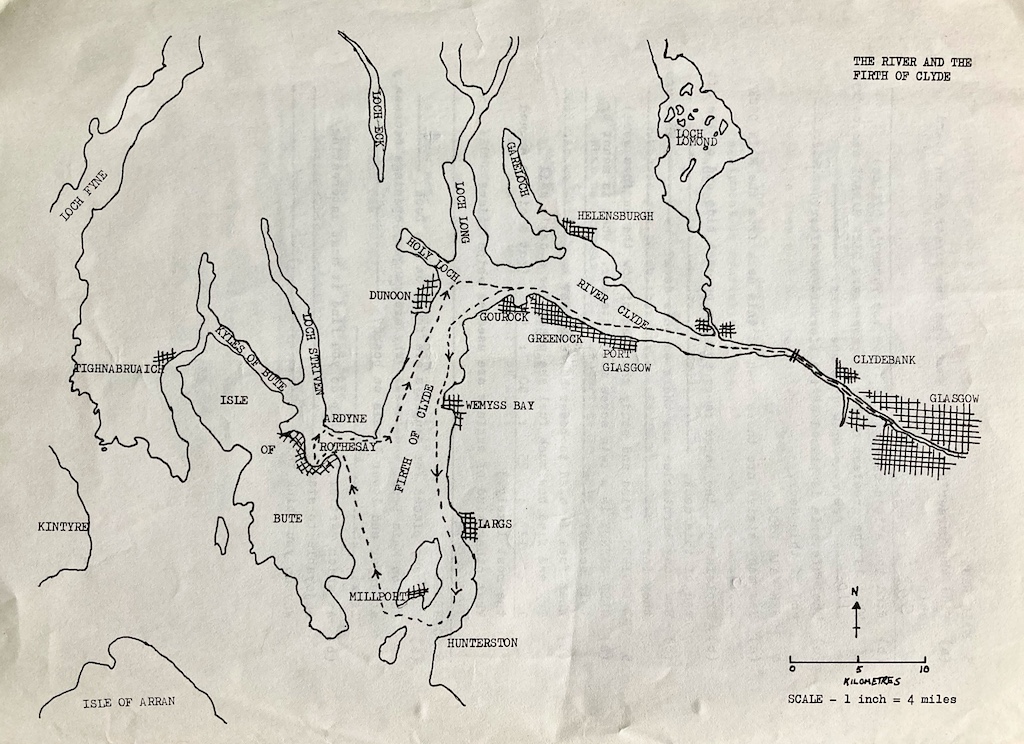
Page 4 of the worksheet was a simple map of the Clyde estuary showing the itinerary followed by Glen Sannox
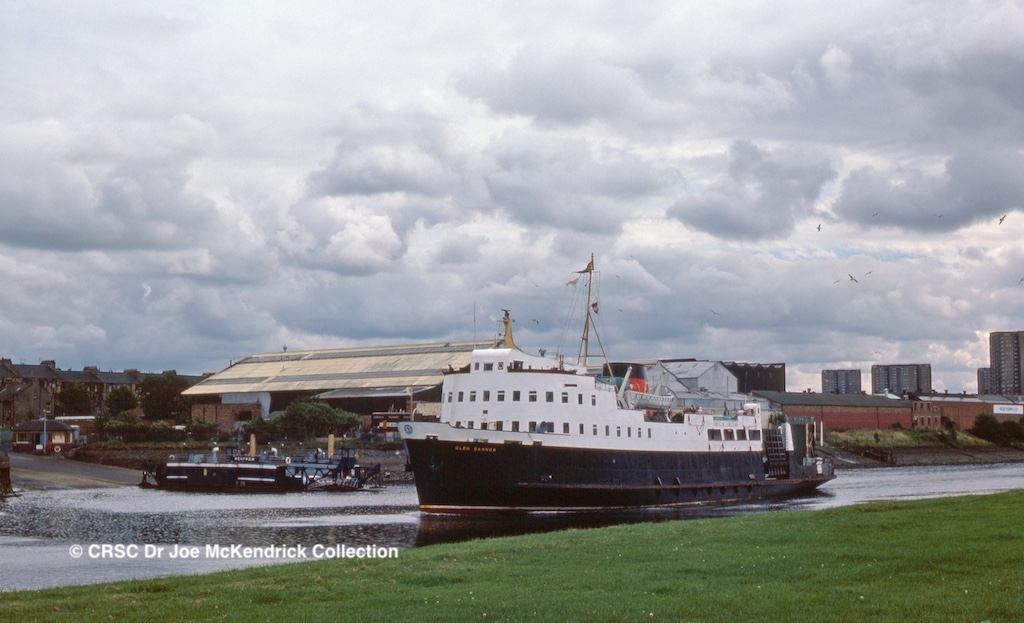
Glen Sannox passing the Renfrew Ferry on her way downriver. This photo dates from 1976, shortly before she was given white lines round her hull
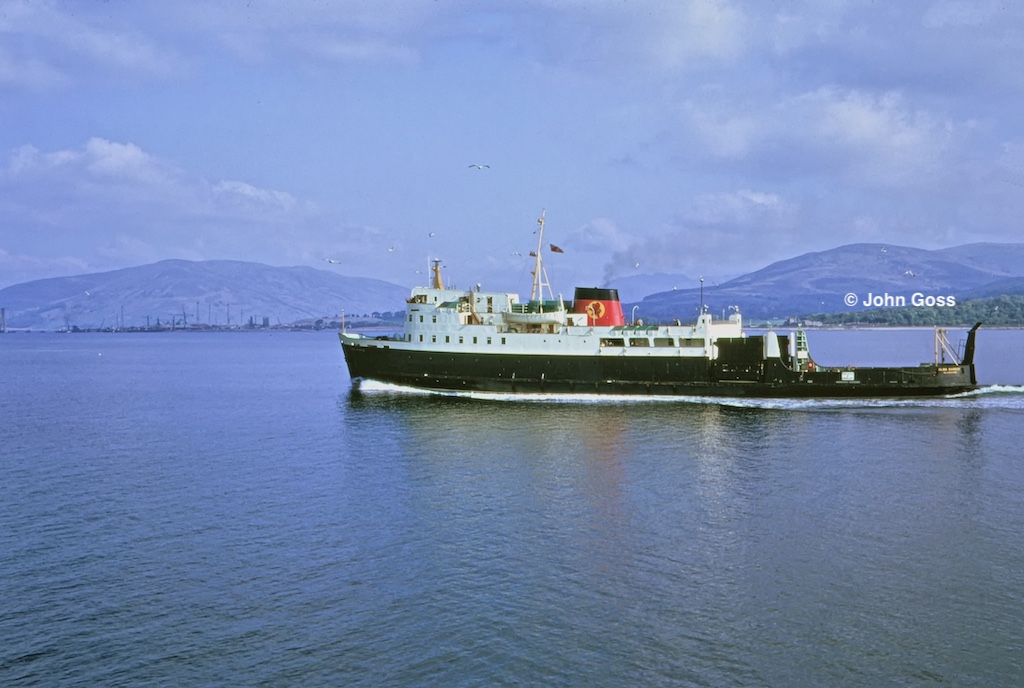
Approach to Rothesay, with the Ardyne oil platform construction yard in the distance on the left: ‘When we reached Rothesay, we got off and just scurried up the town: we were left to our own devices and the teachers went to the pub’
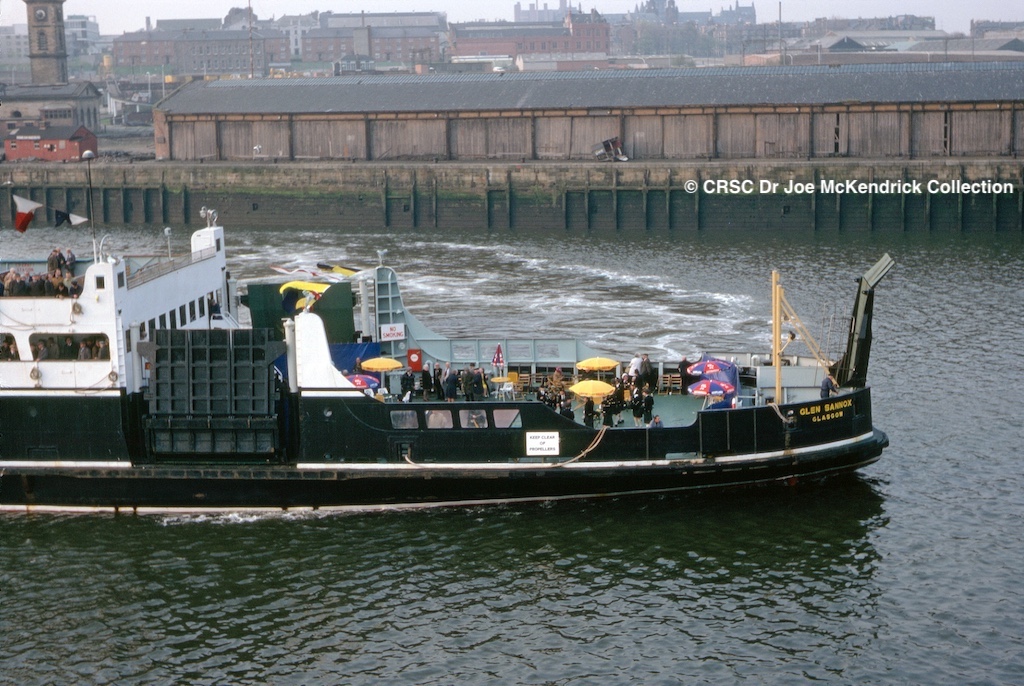
When Glen Sannox undertook cruise duties, parasols and tables were laid out on the open aft part of her vehicle deck
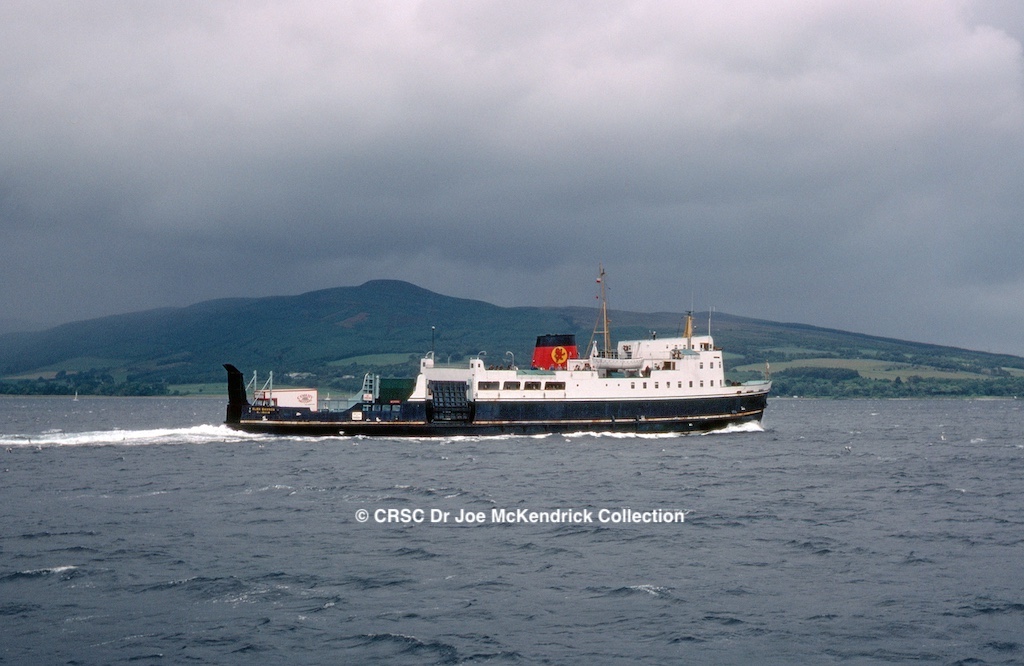
Heading back up-firth: the ‘Sannox’ had many devotees, but James Fisher was more impressed by the manoeuvrability of the ‘streakers’ at Gourock
You can watch James Fisher’s December 2022 ‘Members Night’ presentation here.
James, an Ayrshire farmer, sees plenty of benefits in CRSC membership. You can join CRSC here and, like him, share your interest in ships with like-minded enthusiasts.
Published on 2 March 2024














